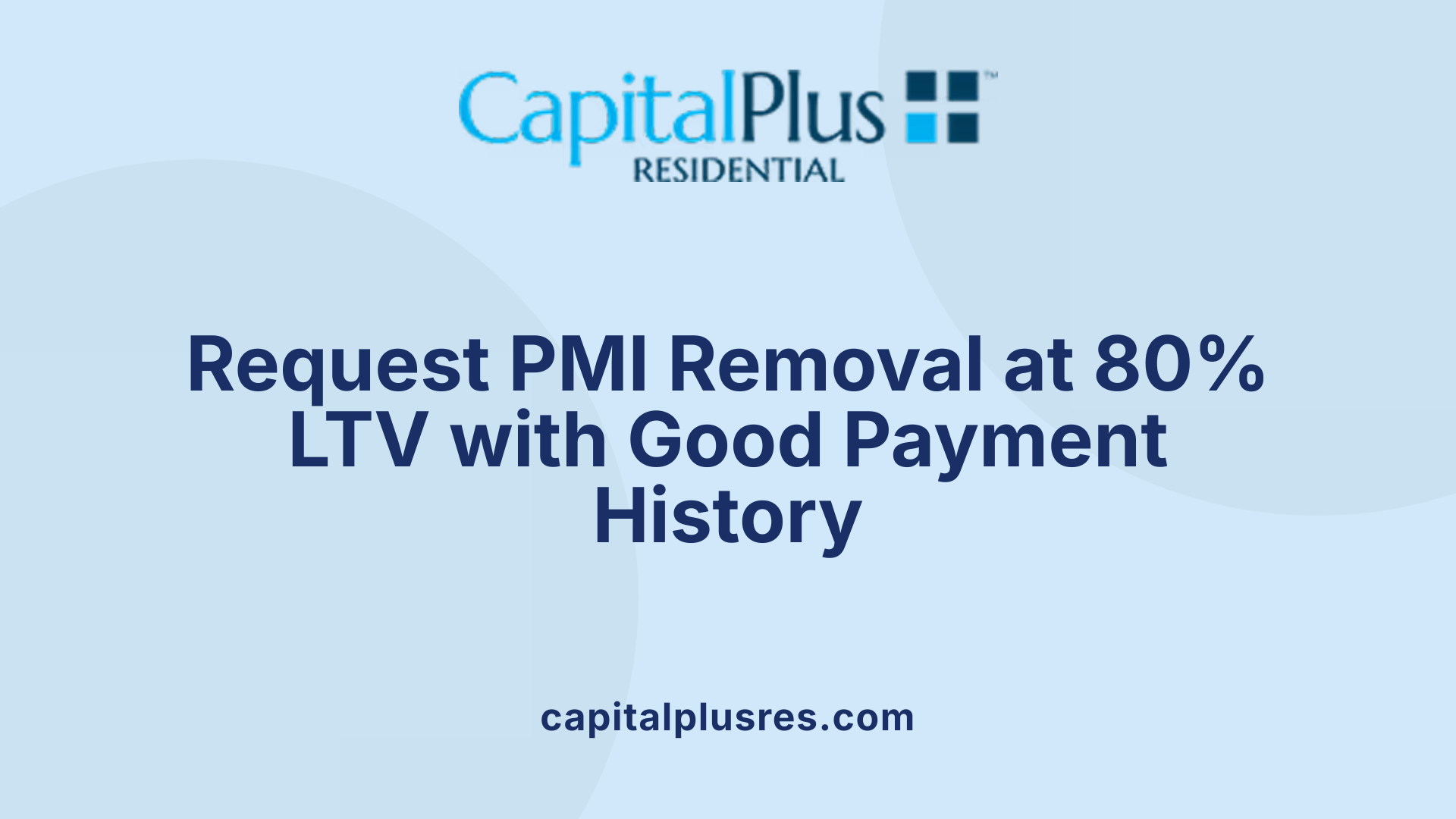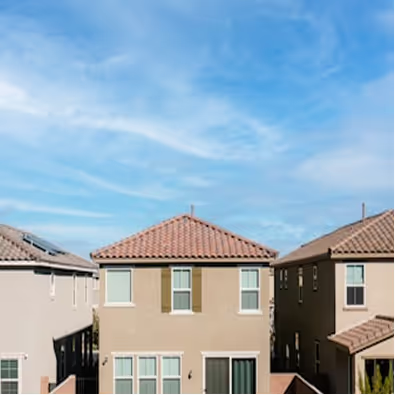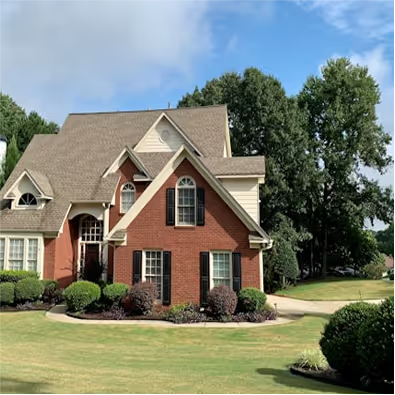Understanding When and How to Refinance to Lower PMI Costs
Refinancing your mortgage can be a strategic move to reduce or eliminate private mortgage insurance (PMI), saving you money in the long run. To maximize these benefits, it's essential to identify the optimal timing for refinancing. This involves understanding the milestones related to home equity, market interest rates, and refinancing conditions. This article explores the various factors and key moments that indicate when refinancing can be most advantageous for lowering PMI costs.
Milestones for PMI Reduction and Automatic Cancellation

What is the typical timeline or milestone, such as reaching 20% equity, for refinancing to reduce PMI?
Reaching 20% equity in your home is a significant milestone when it comes to managing private mortgage insurance (PMI). Usually, when your mortgage balance drops to 78% of your original home value, PMI is automatically canceled, provided you are current on your payments. This automatic cancellation is mandated by the Homeowners Protection Act of 1998.
However, homeowners can also request PMI removal once their loan balance reaches 80% of the home's original value. This often requires a good payment history and no additional junior liens on the property. The period when you can request PMI removal is typically outlined in the PMI disclosure form you received at closing.
Some borrowers opt to refinance their mortgage before hitting these thresholds, especially if mortgage rates have fallen. Refinancing can help them remove PMI earlier by establishing a new loan based on current home values and lower interest rates.
Additionally, if homeowners believe their home has appreciated in value, obtaining a home appraisal can help confirm increased equity. This can facilitate reaching the 20% equity mark quicker and qualify for PMI cancellation or refinancing.
Overall, the main milestones to watch are:
- Reaching a 78% loan-to-value (LTV) ratio, which triggers automatic PMI cancellation.
- Achieving 80% LTV, when a borrower can request PMI removal.
- Potentially refinancing earlier based on declining interest rates or increased home value, especially if looking to eliminate PMI sooner.
Refinancing as a Strategy to Lower or Remove PMI
How does refinancing help in reducing or eliminating private mortgage insurance (PMI)?
Refinancing is a practical tool that homeowners can use to lower or completely eliminate private mortgage insurance (PMI). When you refinance, you are essentially replacing your current mortgage with a new loan that better reflects your home’s current value.
If your home has appreciated in value since you bought it, refinancing gives you a chance to reach the 20% equity threshold needed to cancel PMI. This is because the new appraisal obtained during refinancing can confirm the increased home value, possibly lowering your loan-to-value ratio (LTV). Once your mortgage balance drops to 80% of this updated home value, you can request PMI cancellation.
Besides increasing home equity, refinancing can also offer other benefits. For instance, it allows you to secure a lower interest rate, which can reduce your monthly payments. You might also choose to shorten your loan term from a 30-year to a 15-year mortgage, helping you pay off your home faster and build equity more quickly.
A common strategy involves switching from an FHA loan to a conventional loan. FHA loans often require mortgage insurance for the life of the loan unless you refinance into a conventional loan once you have at least 20% equity. Switching loans not only helps eliminate MIP but might also provide more favorable loan terms.
During refinancing, you can request a new appraisal of your home. This step is especially useful if you believe your property’s value has increased significantly, perhaps due to local market appreciation or home improvements. A higher appraisal can reduce your LTV below the 80% threshold, making you eligible for PMI removal.
In essence, refinancing leverages increased home value and improved credit profiles to help you avoid ongoing PMI costs. It's an excellent strategy for homeowners who have gained equity through market appreciation or diligent payments, enabling them to save money and reduce monthly expenses.
Below is a summary table illustrating how refinancing can help in different aspects of PMI reduction:
| Refinancing Purpose | Effect on PMI | Additional Benefits | Requirements or Notes |
|---|---|---|---|
| Replace current mortgage with a new one reflecting current home value | Lower LTV, potential PMI removal | Lock in lower interest rates, shorter terms | Home appraisal usually required |
| Increase home equity through appreciation or payments | Meets 20% equity threshold for PMI cancellation | Faster equity buildup, lower payments | Home must have increased in value or mortgage paid down |
| Switch from FHA to conventional loan | PMI can be eliminated if 20% equity achieved | More flexible loan options | Require refinancing into a conventional loan |
| Use appraisal during refinance | Confirms increased value for PMI eligibility | May lead to earlier PMI removal | Usually necessary if home value has appreciated significantly |
Summary Table of Home Equity and PMI Cancellation:
| Scenario | How PMI is Eliminated | Conditions | Additional Notes | |--------------------------|-------------------------|------------|------------------| | Automatic cancellation | Loan reaches 78% LTV | Scheduled by law, Homeowner must be in good standing | Not used for PMI removal, but for MIP on FHA | | Request PMI removal | When mortgage balance hits 80% of purchase price | Good payment history, often requires new appraisal | | Home appreciates in value | Refinance with appraisal, lower LTV | May require refinancing costs | | Refinancing into a conventional loan | Replaces FHA or standard loan | Has 20% equity, and credit approval |
Understanding how refinancing can help you eliminate PMI is crucial for reducing your long-term housing costs. By keeping an eye on your home’s value and exploring refinancing options, you can benefit from lower payments and increased financial flexibility.
Optimal Timing for Refinancing to Achieve PMI Savings

When is the right time to refinance to lower PMI costs?
Refinancing becomes financially advantageous for homeowners primarily when it results in sufficient equity to eliminate Private Mortgage Insurance (PMI). Typically, homeowners can request PMI removal once their mortgage balance reaches 80% of their home's current value. Automakers also remove PMI when the loan balance drops to 78% of the original or appraised home value.
One of the most favorable scenarios involves refinancing to access a lower mortgage interest rate. If interest rates have fallen since the original loan, refinancing can reduce monthly payments and overall interest costs, making it easier to pay down the mortgage faster and reach the 20% equity threshold needed to cancel PMI.
Another critical factor is home appreciation. If the home’s market value increases due to housing market trends or improvements, the homeowner's equity grows, potentially lowering the loan-to-value (LTV) ratio and enabling PMI removal. Homeowners can also opt for a new appraisal to assess their home's increased value, especially if they've owned the property for several years and made substantial payments.
However, it's essential to balance the benefits against the costs. Refinancing involves closing costs, application fees, and sometimes appraisal fees. Homeowners should calculate the break-even point—how long it takes for monthly savings to cover the refinancing expenses.
Monitoring mortgage rates periodically helps identify best refinancing opportunities. When rates are notably lower than the current mortgage rate, refinancing can lead to significant cost savings. Additionally, if market trends suggest a rise in home value, waiting until an appraisal confirms increased equity makes sense.
What conditions make refinancing more beneficial than waiting?
- The interest rate on current mortgage loans drops significantly below the original rate.
- The home's market value has increased enough to reduce the LTV below 80%, especially if a home appraisal confirms higher property value.
- The homeowner has established good payment history and holds at least 20% equity.
- The potential savings from lower monthly payments and reduced mortgage term outweigh the costs associated with refinancing.
How does home appreciation influence refinancing decisions?
Appreciation of the home’s value can accelerate equity buildup, which helps homeowners reach the 20% threshold sooner. A professional appraisal can verify increased value, boosting confidence to refinance and eliminate PMI. Maintenance, home improvements, and market appreciation all contribute to this increase.
Should I wait for an ideal market condition?
Strategically waiting for interest rates to decline or for home values to appreciate can maximize savings. However, market conditions are unpredictable. Homeowners should regularly review mortgage rates and property values, and consult with financial advisors to determine the most opportune moment.
Below is a comparative overview of influence factors, benefits, and considerations regarding refinancing for PMI elimination:
| Factor | Impact on Refinancing Decision | Additional Notes |
|---|---|---|
| Interest Rates | Lower rates make refinancing more attractive | Aim for a rate at least 0.5% lower than current rate for savings |
| Home Equity & Appreciation | Increased value speeds up PMI removal | Obtain an appraisal to confirm increased home value |
| Time in Home | Longer ownership increases equity buildup | Beneficial if planning to stay long-term to recoup refinancing costs |
| Refinancing Costs | Need to balance against savings | Closing costs, appraisal fees, and other charges should be considered |
| Financial Goals | Faster payoff or lower payments desired | Short-term vs. long-term savings should guide timing |
Being vigilant about market conditions, home value trends, and personal financial goals enables homeowners to decide the most beneficial moment to refinance, ultimately leading to substantial savings and peace of mind.
Strategic Timing and Considerations for Refinancing

How can I strategize the timing of refinancing to maximize savings from lower PMI rates?
Refinancing your mortgage at the right time can lead to substantial savings, especially when aiming to eliminate private mortgage insurance (PMI). The first step is to monitor your home equity. Typically, once your equity reaches 20%, equivalent to an 80% loan-to-value (LTV) ratio, you're eligible to request PMI cancellation. If your home has appreciated in value or you've paid down your mortgage, you might be closer than you think.
Next, keep a close eye on current interest rate trends. Refinancing when rates drop about 1% below your existing rate can be particularly beneficial, as it often results in lower monthly payments and overall interest costs. It’s also advantageous if rates are significantly lower than your original mortgage rate, making refinancing more cost-effective.
Calculating your break-even point is crucial. To do this, divide your total refinancing costs—including application fees, closing costs, and other expenses—by your estimated monthly savings. This helps determine how long it will take for your savings to cover the cost of refinancing. If you plan to stay in your home beyond this period, refinancing becomes a smart move.
Additionally, consider the potential for home appreciation. If your property value has increased substantially, you may reach that 20% equity threshold earlier through a simple appraisal, enabling faster PMI removal.
Refinancing is also an opportunity to adjust your loan term. Shortening your loan from 30 to 15 years, for instance, can lead to greater interest savings and allow you to pay off your home faster. However, this change usually results in higher monthly payments, so weigh this option based on your financial situation.
Finally, improve your credit score before refinancing. A higher credit score can qualify you for better interest rates, amplifying the benefits in terms of lower payments and savings. Combining these strategies helps to time your refinancing optimally, maximizing affordability and long-term savings.
Making the Most of Your Refinance Strategy
Timing your refinance to benefit from lower PMI rates involves careful planning and awareness of your home’s equity, current interest rates, and market conditions. The optimal time typically occurs when you've reached at least 20% equity—either through paying down your mortgage or increased home value—coupled with favorable interest rate trends. Reassessing your financial situation, considering home appreciation, and calculating when the savings outweigh the costs can help you make informed decisions. By doing so, you can eliminate PMI sooner, reduce your mortgage payments, and ultimately improve your financial stability.
References
- Do I have to refinance to get rid of PMI?
- When to Refinance a Home Mortgage Loan?
- 6 times when it makes sense to refinance your mortgage
- How To Get Rid Of Private Mortgage Insurance (PMI)
- Refinance to Remove Mortgage Insurance
- How To Get Rid Of Private Mortgage Insurance (PMI)
- When Is It Worth It to Refinance Your Mortgage? | 2025
- Ditching PMI: How Refinancing Can Save Broward ...
Latest Blog


Get Pre-Approved Today
Start your secure online application now so you can get pre-approved for a mortgage (and close on your dream home) quickly within 5 minutes.









